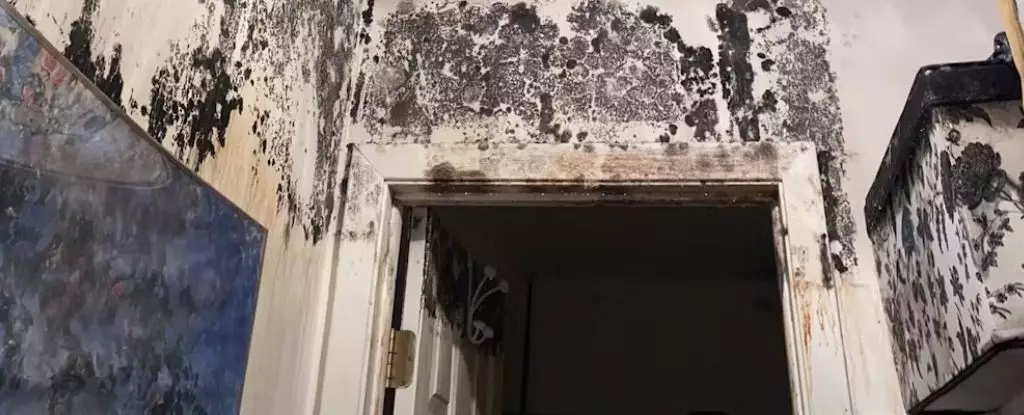Mold presence in residential spaces is a common concern for many homeowners. While it is common to find mold in various forms throughout the world, understanding the implications of mold in your living space is essential. Mold is not merely an aesthetic issue; it has significant implications for health and comfort. This article delves into the complexities of mold growth, its effects, and how homeowners can manage it effectively.
Molds are a diverse group of fungi that thrive in various environments, making them one of nature’s most abundant organisms. With over a million species identified, these microscopic entities play crucial roles in nutrient cycling and organic matter decomposition. Molds contribute greatly to soil health and have important ecological functions, yet their presence in homes can lead to troubling scenarios.
In an indoor environment, molds thrive in damp areas where moisture accumulates. They are adept at colonizing organic materials, from wallboard to fabric. While many reside harmlessly in our homes, some can elicit allergic reactions or aggravate pre-existing health conditions, such as asthma. The understanding of mold includes the distinction between beneficial and harmful varieties, prompting discussions about their management in human-inhabited spaces.
Mold reproduces using spores, microscopic particles that are released into the air to spread. These spores often go unnoticed, as they can be present in large quantities, floating through the air we breathe. Once they land on a suitable surface—typically warm and moist—they germinate and expand into colonies. This process can occur rapidly, leading to visible mold growth within a short period.
Identification of mold species typically requires microscopic examination of their spores, as many indoor molds share structural similarities. Common species found in homes include *Aspergillus*, *Penicillium*, *Cladosporium*, and Stachybotrys, often referred to as “black mold.” Each has its characteristics, implications for human health, and requirements for remediation.
Mold exposure poses potential health risks, particularly for sensitive populations such as children, the elderly, and individuals with compromised immune systems. The main health concerns associated with indoor molds stem from allergens and irritants released into the air. Symptoms can vary significantly, encompassing respiratory issues, skin irritation, and general allergy-like reactions.
While much debate exists surrounding the role of molds in severe health conditions, such as mycotoxin exposure, definitive evidence remains elusive regarding direct causation in a majority of cases. Nonetheless, excessive mold growth—especially in cases of significant moisture damage—can create environments conducive for more severe health problems. Therefore, diligence in addressing moisture issues is vital.
Mold can flourish in nearly any location that hosts moisture, making bathrooms and kitchens prime sites for growth. Homeowners often find it lurking in less visible areas such as beneath sinks, inside appliances, and behind tiles. Visible mold often appears as dark or discolored patches; however, its presence isn’t always easily detectable until it has caused extensive damage.
To identify problematic mold growth, homeowners should remain vigilant about signs of leaks or excess moisture. Common indicators include musty odors and discoloration on walls, ceilings, or floors. Armed with this awareness, individuals can act swiftly to mitigate mold proliferation before it escalates.
When faced with mold growth, action needs to be taken to prevent further spread and protect health. For small patches of mold, homeowners can typically manage the situation using commercially available mold removers or a simple cleaning solution like vinegar and water. However, larger infestations, particularly those exceeding a specified size (such as a pizza box), often require professional assessment and remediation.
Before remediating mold, controlling the moisture source is crucial—a step that directly addresses the core problem. If molds grow because of persistent plumbing issues or flooding, these must be remedied to prevent recurrence.
In more severe cases involving significant water damage, professional mold remediation services should be considered. These experts employ specialized tools and techniques to thoroughly remove mold while testing air quality to ensure levels are safe for habitation once again.
Mold growth is a common yet manageable occurrence in residential settings. While many molds serve essential ecological roles, their presence in the home can lead to significant discomfort and health risks. Understanding mold biology, potential health implications, and proper remediation techniques equips homeowners to deal proactively with mold issues. By maintaining vigilance over moisture levels and promptly addressing mold concerns, families can create safe, healthy living environments. Ultimately, awareness and swift action are your best defenses against the pervasive and sometimes harmful presence of mold.

